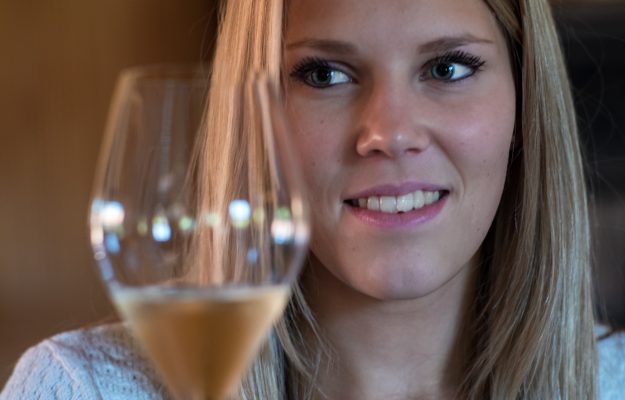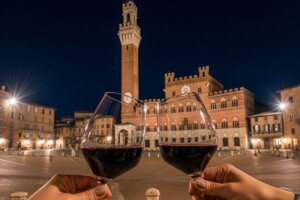Italian sparkling wines, which have been driving the growth of Italian wine exports for years, have also been the great protagonists of the strong recovery of Italian wine in 2021, both “at home” and abroad (pending the final figures that should confirm the record of over 7 billion euros for the entire wine sector). And further confirmation of growth in both 2020 and 2019 (albeit to a lesser extent) comes from OVSE-Osservatorio Economico Vini e Spumanti (The Wine and Sparkling Wine Economic Observatory), an independent structure founded in 1991 at the Catholic University of Piacenza and headed by Giampietro Comolli. From which it emerges, importantly, that, in general, values have grown more than volumes.
In Italy, explains an Ovs note, the on-trade has reopened its doors and consumption has started to grow again, not to mention the continuity of the e-commerce sector, both corporate and platform-based. In any case, the consumer price has moved up the scale that guides purchasing behavior. Total wine recovered +5% compared to 2020, but did not reach the 2019 figure. For Italian sparkling wines, growth was 12%, although convivial consumption of sparkling wines off-premise and at events was lacking during the year. The figures show 205/208 million bottles of national origin (to which 6 million foreign bottles should be added, a rise compared to 2020) actually uncorked during the year, equal to the spending of 1.4 billion euros, with an average price per bottle on the market of 6.8 euros. Domestic consumption grew to 61% of the total.
The consumer turnover was lower than in 2019, but higher than in 2020, with a slight drop in the average consumer bottle price due to blockages in the horeca, public and tourism sectors. Among the denominations, the Observatory points out, Prosecco did very well, both with its DOC and the DOCGs of Conegliano Valdobbiadene and Asolo, but also Franciacorta and Alta Langa. While the quotas and positions of TrentoDoc and sparkling wines from Alto Adige are stable, “native” bubbles from other regions and territories are also growing, especially in the South. “The tendency”, explains OVSE, “has been to prefer the most renowned brands, the millesimal types and those tending towards dryness”.
The situation abroad is more complex, but net of logistical difficulties, regulatory and bureaucratic problems, and currency exchange rates, consumption of Italian wines and sparkling wines was growing in 2020, equalling and exceeding even the 2019 figures. “Global gross saleable production exceeds 6.9 billion euros and for the moment health evaluations have not affected the markets”, the Observatory further underlines.
World consumption of Italian wines has grown by 12% compared to 2020 and 4% compared to 2019. Giampietro Comolli explains: “the most interesting element is the fact that the consumer values of Italian wines in all the main importing countries are growing, in percentage terms, more than the volumes, and this reduces the historic price gap in the shop window and on the list between Italian and foreign wines, starting with a bottle of sparkling wine. This is a sign of consideration and acceptance of the increased combination of value and national identity. The unit value of a bottle of Italian wine has increased more than those of France, Spain and Australia, while the value at the origin of production and at customs is still low”.
Where Italian sparkling wines lead the pack: first in Europe, and first in non-EU exports, with increases from 40% to 15%, in order in the USA, Germany, Canada, the United Kingdom, and also in Russia and the Far East. Very good results in France (+16%), recovery in Switzerland (+11%), Canada (+15%) and Japan, but with very significant sales price growth. Domestic purchases have almost doubled in certain chains and collective distribution platforms over 2 years. Ovse, the note points out, analyses consumer data and not declared production data.
“And consumption figures in foreign countries show a strongly growing trend: 620/628 million bottles consumed abroad in one year, with exceptional peaks of over 130 million in the USA, 17 million in Switzerland and over 100 million in the UK. In France, more and more Italian sparkling wines are flying, exceeding 21 million, for the first time in China we are at almost 9 million bottles, and Russia has taken great impetus in the second half of the year, recording a +19% increase in volumes consumed”. The biggest consumers of Italian sparkling wines are therefore confirmed as being the USA, after years of leadership by the British. In particular, Prosecco Doc is the leader among EU sparkling wines in consumption in non-EU countries.
At customs, sparkling wines recorded a global value of 1.9 billion euros (out of a total of 6.9 billion), up 29% on the 2020 figure. There is also a record in consumer turnover: for the first time, the value on world tables exceeds 6.8 billion euros, with an average purchase price per bottle of around 11 euros. “For the first time, in 2021, the unit values of Italian sparkling wine abroad grew more, year on year, than volumes: the latter recorded +9.22% against +10.80%. A signal to be studied”, adds Comolli.
But he adds further elements of analysis. “Beyond the numbers, wine and sparkling wine consumption in 2021 provides two questions: how to maintain the positive trend abroad, how to sustain domestic consumption. Consumption has become more pleasure and satisfaction, so much more attention needs to be paid to context and content than just commercial development. An easy mistake for those who only see volumes and turnover as a business factor”, explains Comolli.
According to him, “not even the revolution in purchasing or sales channels will be decisive in the coming years and decades. It is certain that e-commerce and domestic consumption will be fundamental, but the difference will be made by the “lifetelling” of wine and the environmental education and knowledge and customs that are evolving in all countries, both mature and new. The “diffuse” content of wine and sparkling wines will also make the difference towards health spasms and the related service, including that activated in horeca, will determine the success and trend. The great wine regions are moving on this, from Chile to Australia, from Champagne to Napa Valley. The availability of correct information will be closely linked to individual and collective spending”.
Copyright © 2000/2025
Contatti: info@winenews.it
Seguici anche su Twitter: @WineNewsIt
Seguici anche su Facebook: @winenewsit
Questo articolo è tratto dall'archivio di WineNews - Tutti i diritti riservati - Copyright © 2000/2025









































































































































































































